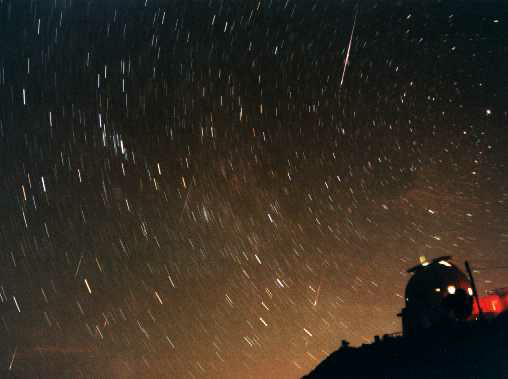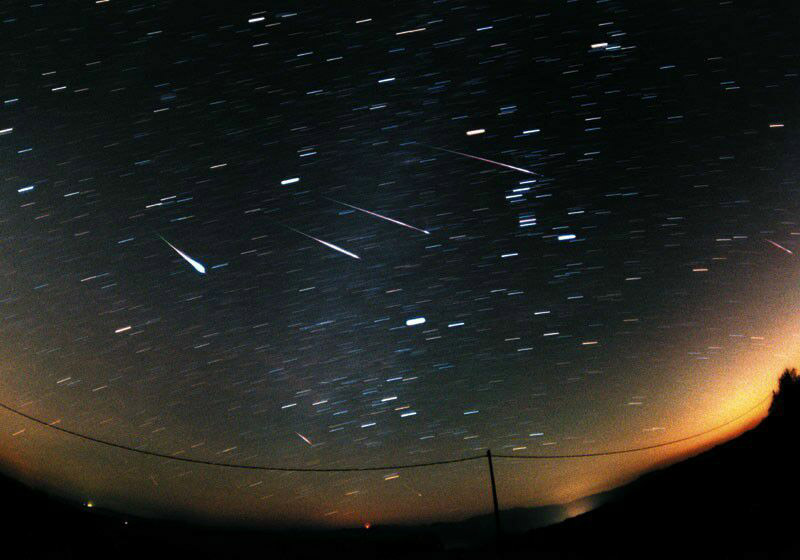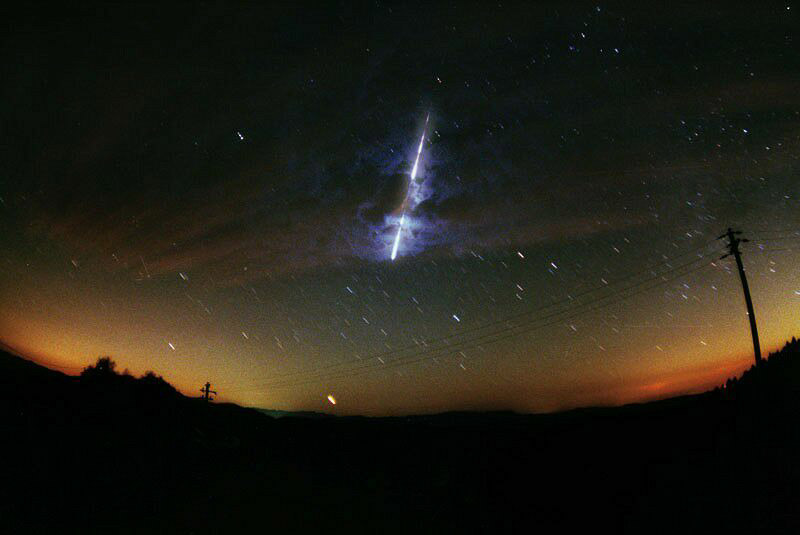






Selected Articles from the
October 2001 Odyssey
Editor: Terry Hancock
- Hollywood Bowl Concert, Diane Rhodes
- Observing the Leonid Meteor Shower, Norm Cook
- A Martian Space Odyssey, NASA/JPL
- Isn't Mars Being Interesting?, NASA/STScI
- The Surf Report, Diane Rhodes
 |
| Wise Observatory in Israel from the early morning of November 17, 1998. NASA-ARC/Image courtesy Wise Observatory. |
Observing the Leonid Meteor Shower
By Norm Cook
Webmaster's Note: This particular article was written for the 2001 Leonids. The suggestions, however, should be good for many years. All images from Leonid Multi-Instrument Aircraft Campaign web site.
 |
| One shows a flurry of four Leonids in the constellations of Monoceros and Orion. NASA-ARC/Image courtesy Lorenzo Lovato. |
Astronomers expect this to be the biggest meteor storm in 35 years, with perhaps as many as 2,000 per hour. The Leonids are swift meteors, which are best known for producing many exceptionally bright meteors that leave a high percentage of persistent trains. The point from where the Leonid meteors appear to radiate is located within the constellation Leo and is referred to as the radiant. The radiant is located in the western portion of that constellation in what is commonly referred to as the ``sickle'' or ``backwards question mark.'' The radiant rises around 12:30 a.m. local time.
 |
| A bright Leonid fireball in clouds. NASA-ARC/Image courtesy Lorenzo Lovato. |
Although a few Leonids can be observed prior to this, more will be seen after it rises. At about 3:00 a.m. the radiant is about 30 degrees above the horizon. To best observe the Leonids wear appropriate clothing for the weather. Lie outside in a reclining lawn chair with your feet pointing towards the east (the general direction of the radiant). Do not look directly at the radiant, because meteors directly in front of you will not move much and fainter ones might be missed. Instead, keep your center of gaze about 30 or 40 degrees above or west of the radiant. The Leonids can be observed right on into morning twilight. Other minor meteor showers will be going on at the time and stray meteors, more commonly called sporadics, will frequently be seen that do not belong to a meteor shower. When you see a meteor mentally trace it backwards and if you arrive at the ``sickle'' of Leo it is probably a Leonid.
These and other images of Leonids are available on Peter Jenniskens' Leonid Image Favorites page.
File translated from TEX by TTH, version
2.25.
On 22 Jan 2002, 17:08.
Copyright © 1998-2003 Organization for the Advancement of Space Industrialization and Settlement. All Rights Reserved.